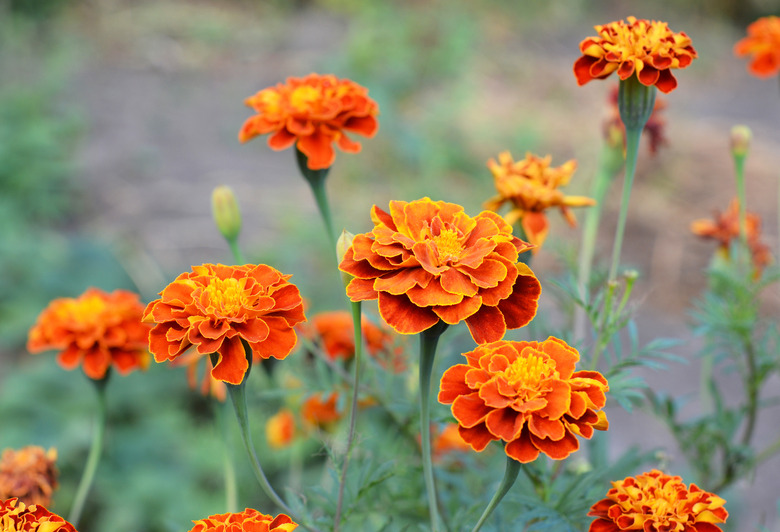What Animal Is Eating My Marigolds?
Marigolds (Tagetes spp.) are flowers with a range of hues from golden yellow to orange or reddish brown. Blooming throughout the summer months and into the fall, marigolds not only add color to the garden but can also attract beneficial insects, such as butterflies. While marigolds are often planted in the garden as a companion plant to ward off pests, some pests target the marigolds themselves.
Rabbits and Marigolds
If you live in an area where there are rabbits, you'll likely need to protect your marigolds. The food and foliage rabbits enjoy nibbling on depend on the season as well as the location, but rabbits are known to munch on the flowers of marigolds. Building a chicken wire fence or another type of fence around your garden is a way to reduce the likelihood of rabbits eating your marigolds.
Aphids and Marigolds
Aphids are wingless insects that can be different colors, including green, yellow, red, or brown, which is influenced by the species and what they eat. Aphids suck the sap from leaves and stems, and marigolds are no exception. Aphids reproduce quickly, so if you spot one or several on your marigold plant, it's best to control them as soon as possible.
Spraying the aphids with water from a hose is often enough to manage the problem. If you need additional help to manage an infestation, spraying the stems and tops and bottoms of the leaves with an insecticidal oil either early in the morning or at dusk will often be sufficient to nip the problem in the bud. Repeat every five days as needed.
Earwigs and Marigolds
These 1/4- to 1-inch insects often feed on the leaves of marigolds at night. The best way to detect if they are the culprit is to check on your plants after dark by shining a flashlight on the leaves. Although earwigs can be beneficial to the garden by preying on aphids, if they are damaging your marigolds, you may consider setting a trap. Use a small container, such as a tuna or cat food can, and bury it in the ground with only the lip of the can exposed. Fill the can with 1/2 inch of tuna oil or other fish oil to attract these omnivores.
Spider Mites and Marigolds
Spider mites are part of the arachnid family and related to ticks and spiders. These tiny pests usually are black or orange and look like dots. Spider mites are problematic because they suck out the cell content of leaves. A few spider mites aren't a concern but when an infestation occurs, you'll need to take action. Check leaves for light dots; prolonged sucking or an infestation may cause the leaves to turn yellow or red and eventually fall off. If an infestation occurs, spray the infested areas of the marigold plants — especially the backsides of leaves — with insecticidal soap.
Snails and Slugs
Snails and slugs are known to be common garden pests and enjoy snacking on the seedlings and leaves of marigolds, especially when there is lots of foliage. If not managed, they can do extensive damage. To get rid of snails and slugs, you can pick them off by hand, which requires regular vigilance; set up a trap; or create barriers to prevent them from entering garden beds and planters using copper foil tape, copper flashing and screen, or a combination.
